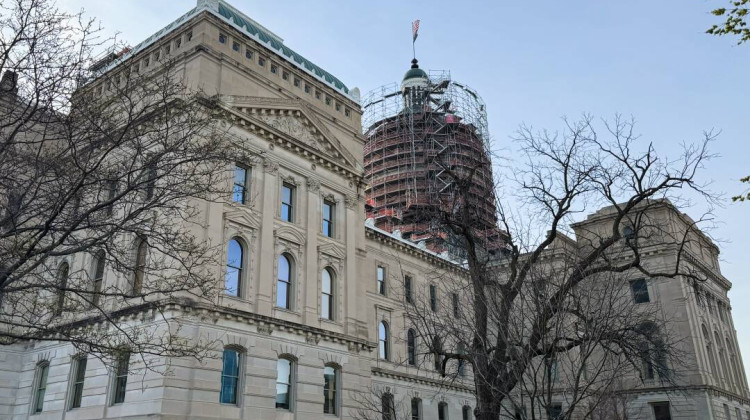
An EPA civil engineer shows how corrosion control treatments can affect lead pipes. The one on the left was treated, the middle one was not, and the one on the right is a new pipe.
Lauren Chapman/IPB NewsIndiana ranks 14th for most lead pipes nationwide, according to a recent Environmental Protection Agency report. The state would have to spend nearly $11.7 billion to replace all of its lead service lines – which make up 2.9 percent of total service lines in the state.
Gabriel Filippelli is the executive director of the Indiana University Environmental Resilience Institute.
He said a lot of older states and states with older cities tend to have more lead pipe infrastructure.
“The fact that they're particularly concentrated in areas with a lot of older cities is just that we weren't fully aware of the very dangerous nature of lead pipes in the past,” Filippelli said.
The vast majority of lead pipes in the U.S. are east of the Mississippi River, though Texas is an exception. It accounts for a little more than 7 percent of all projected lead service lines in the country.

He said lead pipes can be moderately safe if they are maintained well. However, he said the crisis in Flint, Michigan, showed where lead pipes being improperly maintained could go wrong.
“That change in water chemistry ended up corroding all of the protective layer that actually builds up on the inside of these lead pipes,” he said. “Flushing all of that lead – accumulated decades of lead — into people's homes and into children's bodies.”
Filippelli adds the biggest challenge in replacing lead pipes is finding out where they are – as they are not mapped out well.
“The challenge that cities have is they don't actually know where their lead pipes are,” he said. “Nobody mapped them out very well or at all. And so cities like Indianapolis and others in Indiana are first having to do their best guess of where the lead pipes might be.”
Join the conversation and sign up for the Indiana Two-Way. Text "Indiana" to 73224. Your comments and questions in response to our weekly text help us find the answers you need on statewide issues.
He said Indiana receives federal funding each year to identify lead pipes, and that money from sources such as the Bipartisan Infrastructure Law help to continue to fund this.
CORRECTION: A previous version of this story misspelled Gabriel Filippelli's last name.
Violet is our daily news reporter. Contact her at vcomberwilen@wfyi.org or follow her on Twitter at @ComberWilen.
Collapse
 DONATE
DONATE






 Support WFYI. We can't do it without you.
Support WFYI. We can't do it without you.